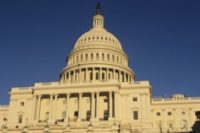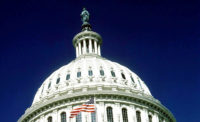
Reprinted by permission of author.
OSHA –
It doesn’t make much sense to go through all of the different proposals on the FY15 federal budget, so let’s just stick with the facts as they stand. The only thing that has been actually put to paper is the Senate Labor Appropriations Committee spending bill that would provide OSHA with approximately $557.4 million in FY15. That’s just a tad under what the President proposed and a tad more than what OSHA is currently spending.
Within this spending bill there are few surprises, but details are sketchy. While it is not expected that the bill will cut or increase any area by more than a few dollars, one section clarifies that the agency can conduct inspections of small facilities where there might be a chance for a catastrophic chemical incident. Another section strongly encourages the agency to continue supporting the Voluntary Protection Program.
The House has yet to consider a bill on OSHA appropriations.
NIOSH –
The Senate Committee bill provides NIOSH with the same amount ($332.4 million) in FY15 as appropriated in FY14; however what makes this an important proposal is the fact that the bill continues to provide funding for the NIOSH Education Research Centers, funding the President had recommended be cut from the budget.
MSHA –
MSHA funding falls in line with what the Senate panel recommended for OSHA – a tad less than what the President recommended but a tad more than what MSHA currently receives. The bill provides MSHA with $376.4 million.
Outlook – This recommendation is but the first in what will be a long line of proposals. It is doubtful the Senate panel proposal will even make it to the floor of the Senate for a vote let alone is sent to the House and the President. The most likely scenario is that Congress will return from summer recess, take a look at all of the appropriations bills that must be considered and simply pass a “continuing resolution” (CR) to fund the government at the same level as currently funded, at least until January. At that time a new Congress will come to town and be responsible for funding the government.
Regulatory Reform
Lawmakers continue their assault on the regulatory system with even more bills introduced to address various parts of the regulatory process. This comes on top of nearly 20 bills previously introduced that would make changes. The most recent examples:
S.2216 –
This bill would grant a six-month grace period to any small business charged with violating a regulation to remedy the alleged violation, so long as the violation doesn’t provide an imminent threat to life. If the small business fixes the problem, the citation is revoked.
H.R.4304 –
Would require federal agencies to review existing regulations and modify, consolidate, or phase them out.
H.R.4646 and S.1390 –
Would repeal or revise outdated or redundant federal regulations.
H.R.5184 and S.2153 –
Would create an Office of Regulatory Analysis. All proposed regulations would have to be reviewed before being implemented.
H.R.4874 – Would require federal agencies to cut some existing regulations before they can reissue new ones.
Outlook – While some of these bills, as well as the ones previously introduced, provide some excellent approaches, the “devil is in the details” as they say. This is much more of a complex issue than many think. But not to worry, the chances of any of these measures making their way into law are perhaps less than 1%.




